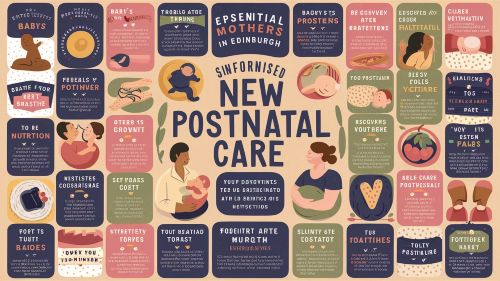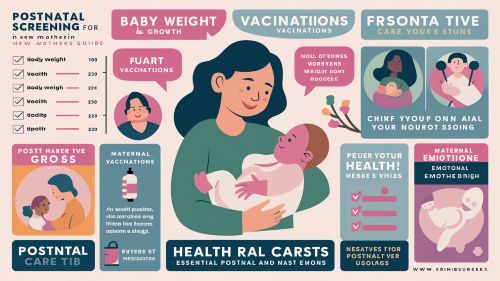You pictured this moment for months: the soft weight of your baby on your chest, the overwhelming rush of love, the quiet joy. But the reality feels… different. Instead of bliss, you’re navigating a fog of sadness. Instead of peace, your mind is racing with anxiety.
You feel guilty for not being happier, and a terrifying thought whispers in the background: Is this just the “baby blues,” or is something seriously wrong?
You are not alone in asking this question. Postpartum depression (PPD) is far more complex than the simple stereotype of a crying mother. It is a spectrum of symptoms that can be confusing, isolating, and deeply frightening. Recognizing these symptoms is the first, most powerful step you can take toward healing.
This guide will explain 10 of the most common signs of postpartum depression, moving beyond clinical definitions to describe what they actually feel like for a new mom. If you see yourself in these descriptions, know that this is not your fault, and you do not have to go through this alone.
First, A Quick Reality Check: Baby Blues vs. PPD
Before we dive in, let’s clear up the biggest point of confusion.
- The Baby Blues: Lasts for up to two weeks after birth. It’s a rollercoaster of mood swings, weepiness, and feeling overwhelmed caused by hormonal shifts. It’s common, and it resolves on its own.
- Postpartum Depression (PPD): Lasts for more than two weeks. It’s a clinical mood disorder that significantly impacts your ability to function and often gets worse without treatment.
Key Takeaway: If your struggle has been persistent for more than two weeks, it’s time to look more closely at the possibility of PPD.
The 10 Common Symptoms of PPD, Explained

1. Persistent Sadness, Emptiness, or Hopelessness
This is the symptom most people associate with PPD, but it’s deeper than just feeling “sad.”
- What it feels like: It’s a heavy, leaden feeling in your chest that doesn’t go away. It’s a sense that a dark cloud has settled over your life, and you can’t see a future where you will ever feel happy again. You might find yourself crying for long periods without a specific reason, or you might feel too empty to even cry.
- How it’s different from “normal”: Normal new-mom sadness might come in waves after a particularly hard day. This is a constant, pervasive state of misery that colors every moment, even the “good” ones.
2. Loss of Interest or Pleasure (Anhedonia)
This is one of the most confusing and distressing symptoms. It’s the technical term for feeling “numb” or “empty.”
- What it feels like: You feel nothing. Activities you used to love—reading, watching your favorite show, talking to a friend—now feel like a chore. You might look at your beautiful baby and feel a profound sense of detachment, like you’re a babysitter going through the motions. This numbness is often followed by a wave of intense guilt.
- How it’s different from “normal”: A tired new mom might be too exhausted to go out with friends, but she still wants to. With anhedonia, the desire itself is gone.
3. Overwhelming Anxiety and Worry
For many women, PPD presents more as anxiety than depression.
- What it feels like: Your mind is a hamster wheel of racing, uncontrollable “what if” thoughts. “What if the baby stops breathing?” “What if I drop them?” “What if I crash the car?” This isn’t just normal new-mom worry; it’s a constant, high-alert state of dread that you can’t turn off. It can also manifest as panic attacks.
- How it’s different from “normal”: Normal worry is often prompted by a specific concern and can be soothed by reassurance. This anxiety is free-floating, persistent, and often irrational.
4. Irritability and Anger (“Postpartum Rage”)
This is the “secret” symptom that so many mothers feel deep shame about.
- What it feels like: You have a terrifyingly short fuse. The sound of your partner chewing, a toy dropping on the floor, or the baby crying can trigger an explosive, out-of-proportion burst of rage. You might yell in a way that scares you or feel a constant, simmering anger just below the surface.
- How it’s different from “normal”: Every new parent gets frustrated. Postpartum rage feels uncontrollable and is often directed at everyone and everything. It’s a sign that your nervous system is completely overloaded.
5. Crippling Feelings of Guilt, Shame, and Worthlessness
PPD comes with a powerful inner critic that is relentless and cruel.
- What it feels like: You are convinced you are a “bad mother.” You feel guilty for everything: for not breastfeeding “perfectly,” for not enjoying every moment, for feeling depressed in the first place. You feel a deep sense of shame, believing you are fundamentally flawed and your baby deserves better.
- How it’s different from “normal”: A healthy mom might think, “I made a mistake.” A mom with PPD thinks, “I am a mistake.” The guilt is pervasive and attaches to your identity.
6. Difficulty Bonding with Your Baby
This is another source of profound shame, but it is a direct symptom of the illness.
- What it feels like: You feel disconnected, like you’re taking care of a stranger’s baby. You might feel no “rush of love” and may even feel resentment toward the baby for upending your life. You go through the motions of caregiving—feeding, changing, bathing—but feel numb and detached while doing it.
- How it’s different from “normal”: Bonding is a process, not an instant event, for everyone. But with PPD, there is a persistent lack of positive feeling and a sense of being separated by an invisible wall.
7. Severe Fatigue That Isn’t Relieved by Sleep
All new parents are tired. This is something else entirely.
- What it feels like: A bone-deep, leaden exhaustion that never goes away, no matter how much you sleep. It feels like you’re trying to move through wet cement. Simple tasks like taking a shower require a monumental effort.
- How it’s different from “normal”: Normal new-parent tiredness is largely fixed by a good night’s sleep. Depressive fatigue is a heavy, physical symptom of the illness itself and persists even after rest.
8. Significant Sleep Disturbances
This is a cruel paradox of PPD. You’re exhausted, but you can’t sleep.
- What it feels like: The baby is finally asleep, and this is your chance to rest, but your mind won’t shut off. You lie awake for hours, replaying worries or feeling a sense of dread. Or you might fall asleep but wake up frequently in a panic. (Alternatively, some women experience hypersomnia, the desire to sleep all the time to escape.)
- How it’s different from “normal”: Normal postpartum sleep issues are about being woken up by the baby. This is about being kept awake by your own brain.
9. Cognitive Fog (“Mom Brain” on Steroids)
PPD directly impacts the “thinking” parts of your brain.
- What it feels like: You can’t concentrate on anything. You struggle to make even the simplest decisions (what to eat, what to wear). You forget words, lose your train of thought, and feel like your brain is filled with cotton. It’s more than just being a little forgetful; it can feel like you are losing your mind.
- How it’s different from “normal”: “Mom brain” is mild and often situational. This is a persistent cognitive impairment that affects your ability to function across the board.
10. Thoughts of Harming Yourself
This is not just a symptom; it is a medical emergency.
- What it feels like: You may have passive thoughts like, “I wish I could just go to sleep and not wake up,” or “My family would be better off without me.” Or you may have active thoughts about how you would end your life.
- Why it happens: This is not a choice or a character flaw. It is a symptom of severe depression, where the pain becomes so great that the brain starts to see escape as the only option.
What to Do RIGHT NOW If You Have This Symptom:
If you are experiencing thoughts of harming yourself, please take immediate action.
- Call or text the 988 Suicide & Crisis Lifeline. It’s free, confidential, and available 24/7.
- Go to the nearest hospital emergency room.
- Call 911.
- Tell a trusted partner, friend, or family member that you are not safe and need help immediately.
Your life is infinitely valuable. This is the illness talking, not you. Help is available and you can get better.
[This section MUST be visually distinct. Use a “Cover” block with a red or bright yellow background, large font, and bold text.]
You See Yourself in This List. What Now?

Reading this list may be a moment of painful recognition. Take a breath. This is not your fault. This is not who you are. This is a treatable medical condition.
- Validate Your Experience: Let go of the guilt. You are not a bad mom; you are a mom with a common illness.
- Talk to Someone: Share this list with your partner or a trusted friend. Say, “This is what I’m experiencing. I need help.”
- Make an Appointment: Call your doctor (OB-GYN or GP) or a mental health professional. Use this list as your script. You don’t have to explain it all perfectly. You can just say, “I saw a list of PPD symptoms, and I have a lot of them.”
Frequently Asked Questions (FAQ)
Q1: Do I need to have all 10 symptoms to have PPD?
No, absolutely not. A diagnosis is based on having a cluster of symptoms that persist for more than two weeks and impact your life. If even a few of these resonate deeply with you, it’s enough to seek help.
Q2: Can I have PPD without feeling sad?
Yes. For many women, PPD shows up primarily as overwhelming anxiety, rage, and numbness. If those are your dominant symptoms, your struggle is just as valid.
Q3: Is this just exhaustion?
While exhaustion makes everything worse, PPD is different. The key differentiators are often the intense guilt, the loss of pleasure (anhedonia), and the persistent negative thought patterns that don’t go away even after a bit of sleep.
The First Step to Feeling Better
Recognizing your symptoms in a list like this is the first, brave step on the path to recovery. It’s the moment you stop blaming yourself and start identifying the illness. You are not alone in this, and you don’t have to find your way out of the fog by yourself. Help is available, and you will feel like yourself again.
Disclaimer: This article is for informational purposes only and is not a substitute for professional medical advice. If you are struggling, please contact a healthcare provider or a crisis hotline.
